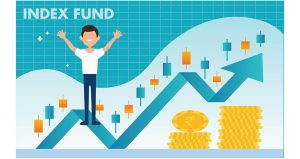Index Funds, Index ETFs: Basics Explanation!
Index Funds & Index ETFs: There are various types of index funds, however, some are as simple as mutual funds and some are as complex as exchange-traded funds (ETFs). S&P 500 (S&P 500) is an index fund that tracks financial market positions. Index mutual funds also provide broad market exposure in addition to low operating expenses, a low portfolio turnover, and broad exposure to various asset classes. Market conditions have no bearing on the performance of these funds since they are benchmarked against their benchmark index.

Individual retirement accounts (IRAs) and 401(k) accounts, which are both retirement accounts, are generally viewed as ideal core portfolio holdings. Index funds have been recommended by legendary investor Warren Buffett as a safe haven to save money for retirement. In contrast to picking individual stocks, he has said investors should consider purchasing index funds with the low costs associated with investing in the entire S&P 500.
Index Funds: How do they work?
Investing passively in index funds is called indexing. By building a portfolio that mirrors an index, a fund portfolio manager does not actively pick stocks or time the market, but rather invests in securities that match the securities of an index.
In addition to matching the performance of the index, the fund is designed to mimic its profile – the stock market overall, or a broad segment of it. A financial market index fund exists for practically every market. Index funds tracking the S&P 500 are among the most popular in the United States. Advantages of Index Funds are as follows:
Relatively Lower Costs
These funds based on the Index have a primary advantage over actively managed counterparts in that they charge a lower management fee. Management expense ratio: A fund’s annual expense ratio is made up of all of the running costs, including advisor and manager fees, taxes, and accounting fees.
Check out: How to plan for early retirement | Follow these tips and retire early!
Index ETF or Fund managers do not need analysts or staff to assist them with stock selection for the simple reason that they replicate the performance of benchmark indices. The transaction costs associated with index funds are lower since they trade assets less frequently. In contrast, an actively managed fund has a larger staff and conducts a greater number of transactions, which leads to higher operating costs.
Better Returns?
Performance is improved when expenses are reduced. Most actively managed mutual funds have underperformed passive funds, according to advocates. Most mutual funds do not outperform their benchmarks or broad market indices. The SPIVA Scorecard data from S&P Dow Jones Indices shows that approximately 75% of the largest U.S. funds generated returns below the S&P 500 in the past five years.8
As opposed to actively managed funds, passively managed funds do not aim to beat the markets. On the theory that the market always wins, their strategy aims to match the market’s overall risk and return.
Index Funds / Index ETFs: How do they work?
Exchange-traded funds (ETFs) are another structure for index funds. Products like these are basically portfolios of stocks that are managed by financial firms, in which each share represents a small percentage ownership stake in the entire portfolio.
Index funds aim to match the performance of the underlying index, rather than beating it. Assuming, for example, that a particular stock comprises 1% of the index, the index fund manager will try to mimic this composition by maintaining that stock inside 1% of its portfolio.
Charges for Index Funds or ETFs
As compared to competing products, index funds come with relatively low fees. A typical active fund fee exceeds one percent, while an index fund fee is less than one percent.
These fees can have a significant impact on investors when compounded over time. It is precisely this opportunity that has made index funds so popular over the past few years. Thus, this was a basic conceptual article about Index ETFs and Funds. There are several more parameters and details to consider as well which can be included in an in-depth article.